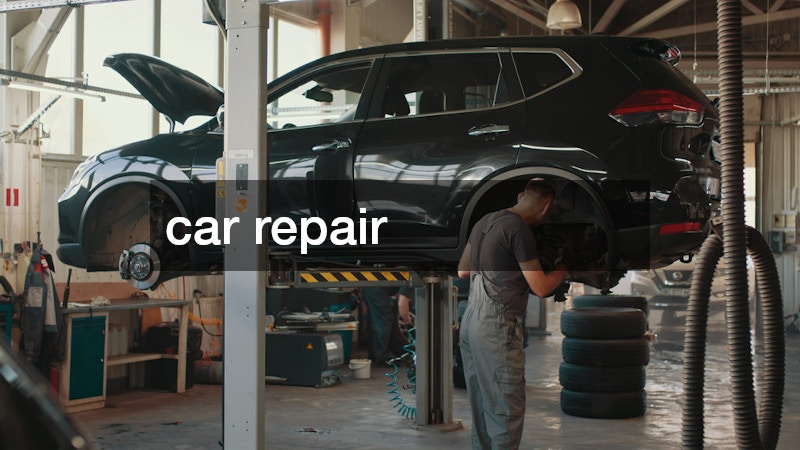
What’s Included in a Mechanic’s Estimate? A Breakdown for Car Owners

- A mechanic’s estimate should include detailed line items for labor, parts, diagnostics, taxes, and shop fees—always ask for it in writing.
- Labor costs can vary depending on whether the shop uses flat-rate or hourly billing, and estimates should specify the method used.
- Parts listed in the estimate should indicate whether they are OEM, aftermarket, or reconditioned, as this affects both cost and quality.
- Diagnostic fees may be separate from repair costs, so clarify if they’ll be waived if you proceed with the service.
- Shop fees and environmental charges are common, but they should be transparent and explained, not hidden under vague terms.
- Comparing estimates from multiple mechanics helps you spot pricing discrepancies and avoid overpaying for unnecessary services.
- Red flags like vague descriptions or inflated labor times can signal dishonest practices; always question anything unclear.

When your car needs service or repair, one of the first things you’ll likely receive is an estimate from the shop. Whether you’re working with a local garage or an auto mechanic that offers estimates as part of their customer service policy, understanding what’s included in that quote is key to protecting your wallet and making informed decisions about your vehicle.
This comprehensive guide breaks down the different components of an automotive repair estimate, what each section means, and how to use that information to your advantage. If you’ve ever found yourself confused by a long list of charges or wondered whether you’re being overcharged, this article is for you.
Why Estimates Matter for Car Owners
Estimates are more than just a guess—they’re an essential part of responsible car maintenance. When you visit an auto mechanic that offers estimates, you’re getting more than just numbers on a page. You’re receiving a snapshot of what’s wrong, what’s needed, and how much it will likely cost.
Benefits of asking for a detailed estimate include:
- Transparency: Understand where your money is going before approving repairs.
- Budgeting: Avoid surprise bills by knowing what to expect.
- Comparison Shopping: Evaluate quotes from different service providers to find the best value.
- Documentation: Have a record of recommended services, which can help with warranties or insurance claims.
Getting an estimate doesn’t mean you’re locked in. Instead, it allows you to make a decision on your terms.
Types of Auto Repair Estimates
Not all estimates are created equal. Some mechanics provide a general ballpark figure, while others offer a comprehensive, itemized quote. Understanding the type of estimate you’re receiving helps set expectations.
1. Preliminary Estimate
This type is often given after a quick visual inspection or a short conversation about the problem. It’s typically free and provides a rough idea of the repair cost, but it may not be 100% accurate.
2. Diagnostic Estimate
Once the mechanic conducts a full inspection or diagnostic scan, they may issue a more detailed estimate. This version includes labor, parts, and any underlying issues that might not have been initially visible.
3. Written Estimate
Some auto shops—especially an auto mechanic that offers estimates proactively—will provide a written copy that breaks down every line item. This is the most helpful version for car owners and is often required by consumer protection laws in certain states.
What’s Included in a Mechanic’s Estimate?
Let’s break down the main elements you’ll find in a mechanic’s quote. Knowing what these terms mean can help you spot inflated costs or negotiate more effectively.
1. Labor Charges
Labor is one of the largest components of any auto repair estimate. Labor costs account for the time a technician spends working on your vehicle.
Common labor billing methods:
- Flat-rate pricing: Based on manufacturer guidelines for how long a repair should take, regardless of actual time spent.
- Hourly rate: Billed according to the number of hours the technician spends on the job.
Key points to consider:
- Labor rates can vary depending on the region and the shop’s overhead.
- Independent shops typically charge less than dealerships.
- Labor charges are often listed as a separate line item for each task (e.g., “Brake pad replacement: 1.2 hours”).
Tips:
- Ask if the labor time is based on a flat-rate manual or the mechanic’s actual working time.
- Clarify whether diagnosis time is included in the labor estimate.
2. Parts and Materials
Every repair involves parts—some big, some small. An estimate from an auto mechanic that offers estimates will specify whether they’re using OEM (original equipment manufacturer) parts or aftermarket alternatives.
Parts classifications:
- OEM parts: Usually more expensive, but match your car’s original components.
- Aftermarket parts: More affordable, with variable quality depending on the brand.
- Rebuilt or reconditioned parts: Used parts that have been restored, typically offered at a discount.
What else might be included under this section?
- Consumables like oil, coolant, or brake fluid.
- Fasteners, gaskets, and other minor materials.
- Shop markups (often 25-100%) on parts, which is standard in the industry.
Tips:
- Ask if you can source the part yourself if you find a better price elsewhere.
- Inquire about warranties on the parts used.
3. Diagnostic Fees
Before making a repair, mechanics often run diagnostics using specialized tools or software. These procedures can include scanning error codes, performing leak tests, or manually inspecting systems.
What to know about diagnostic fees:
- These may or may not be applied toward the total cost of the repair.
- More complex issues typically require longer diagnostic time, which means a higher fee.
- Not all shops charge separately for diagnostics, especially an auto mechanic that offers estimates as a courtesy.
Tips:
- Confirm whether the diagnostic charge will be waived if you proceed with the repair.
- Ask for a detailed explanation of what the diagnostic covers.
4. Shop Fees or Miscellaneous Charges
These are often the most misunderstood items on an estimate. Labeled vaguely as “shop supplies” or “misc. fees,” they can raise eyebrows if not explained properly.
Examples of shop fees include:
- Use of disposable gloves, towels, and cleaning solvents.
- Waste disposal costs for fluids and old parts.
- Battery recycling or hazardous material handling fees.
Tips:
- These fees are usually a small percentage (typically 5–10%) of the total invoice.
- A reputable mechanic will clearly itemize these charges or explain them upon request.
5. Taxes and Environmental Fees
Depending on where you live, taxes and environmental charges will also appear on your estimate.
Possible taxes and fees:
- Sales tax on parts and labor.
- Tire disposal fee (if tires are being replaced).
- Oil recycling or hazardous waste fee for fluids and filters.
- Battery recycling fees for replacement batteries.
These charges are typically non-negotiable but should always be included in the initial estimate so you’re not surprised when the final bill comes.
6. Additional or Optional Services
Sometimes, mechanics will recommend other services that aren’t immediately necessary but could benefit your vehicle’s long-term health. An auto mechanic that offers estimates will usually list these separately with “recommended” or “optional” notes.
Examples include:
- Fluid flushes (transmission, coolant, brake).
- Timing belt replacement.
- Tire rotation or balancing.
- Brake inspection or replacement beyond the original issue.
Tips:
- Ask if the additional services are preventative or urgent.
- Prioritize based on your car’s condition and your budget.
How to Read and Compare Estimates Effectively

It’s smart to shop around before committing to a repair. Comparing estimates from multiple shops ensures that you’re getting fair pricing and honest recommendations.
What to look for when comparing estimates:
- Are labor times similar across all shops?
- Are all parts specified (OEM vs. aftermarket)?
- Are any services listed in one quote but not others?
- Is the language clear, or are there vague terms like “miscellaneous labor”?
Tips:
- Always request written estimates.
- If there’s a large price difference, ask for a detailed justification.
- Be cautious of extremely low estimates—they might skip important steps or use inferior parts.
Red Flags to Watch Out For in Auto Estimates
Even when working with an auto mechanic who offers estimates, it’s important to stay alert for signs of dishonesty or upselling.
Common red flags:
- Large amounts of labor time for simple tasks.
- Parts listed without specifications.
- Vague terms like “engine service” or “suspension work” with no further details.
- No mention of diagnostic fees or shop supplies.
What you should do:
- Ask for clarification on anything you don’t understand.
- Walk away if the shop refuses to provide a written estimate.
- Verify the mechanic’s certifications and experience before proceeding.
How to Get the Most Accurate Estimate
Providing your mechanic with accurate and detailed information from the start leads to better estimates.
Tips for better estimates:
- Be specific about the problem or symptoms your car is experiencing.
- Bring any service records or previous estimates.
- Describe when and how the issue occurs (e.g., “only when braking at high speeds”).
- Request an itemized estimate with separate lines for labor, parts, and other charges.
Final Thoughts
Working with an auto mechanic who offers estimates is one of the smartest ways to approach car repairs. A detailed, transparent estimate not only helps you understand the costs involved but also builds trust with the service provider. By knowing what’s included in a mechanic’s estimate—from labor and parts to taxes and diagnostic fees—you’re better equipped to make confident, informed decisions about your vehicle.
Whether you’re facing a minor issue or a major repair, don’t be afraid to ask questions, compare quotes, and advocate for your rights as a car owner. A good mechanic will welcome your interest and work with you to keep your car—and your budget—in top shape.


